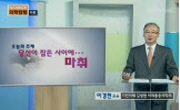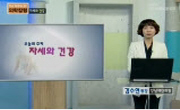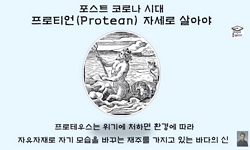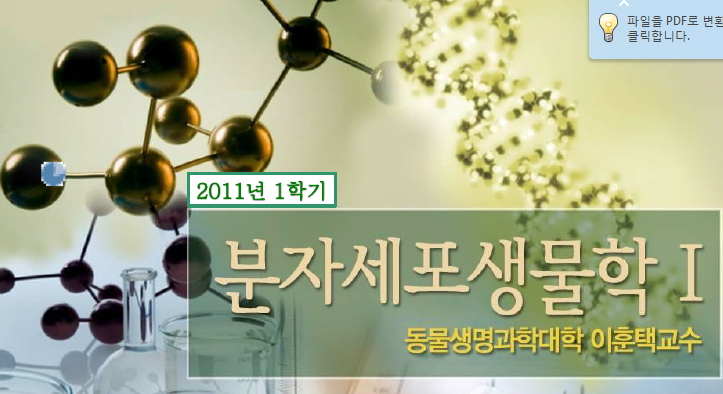목적: 척추측만증에서 관상면상 및 축면상 변형의 크기와 끝 척추, 중립 척추가 체위 및 마취에 의해 어떻게 변화하는지 알아보았다. 대상 및 방법: 31명의 특발성 척추측만증 환자에서 62...
http://chineseinput.net/에서 pinyin(병음)방식으로 중국어를 변환할 수 있습니다.
변환된 중국어를 복사하여 사용하시면 됩니다.
- 中文 을 입력하시려면 zhongwen을 입력하시고 space를누르시면됩니다.
- 北京 을 입력하시려면 beijing을 입력하시고 space를 누르시면 됩니다.
https://www.riss.kr/link?id=A76170057
- 저자
- 발행기관
- 학술지명
- 권호사항
-
발행연도
2008
-
작성언어
Korean
-
주제어
Scoliosis ; Position ; Anesthesia ; End vertebra ; Neutral vertebra ; 측만증 ; 자세 ; 마취 ; 끝 척추 ; 중립 척추
-
등재정보
KCI등재
-
자료형태
학술저널
- 발행기관 URL
-
수록면
329-337(9쪽)
-
KCI 피인용횟수
1
- 제공처
-
0
상세조회 -
0
다운로드
부가정보
국문 초록 (Abstract)
목적: 척추측만증에서 관상면상 및 축면상 변형의 크기와 끝 척추, 중립 척추가 체위 및 마취에 의해 어떻게 변화하는지 알아보았다.
대상 및 방법: 31명의 특발성 척추측만증 환자에서 62개의 구조성 만곡을 대상으로 기립, 앙와위, 측 굴곡, 마취 후, 술후 전후면 단순 방사선사진상 각 만곡의 Cobb 각과 Perdriolle의 방법에 의한 첨부 척추의 회전 변형을 측정하고, 기립, 앙와위, 마취 후 방사선사진에서 끝 척추, 중립 척추를 확인하여 서로 비교하였다.
결과: 앙와위, 측 굴곡, 마취, 수술에 의해 술전 기립 방사선사진상의 Cobb 각은 각각 25.0%, 59.5%, 31.7%, 74.0%가 교정되었으며, 회전각은 각각 6.1%, 6.2%, 24.5%, 25.7%가 교정되었다. 앙와위 및 마취 후 사진 모두에서 18명(58.1%)의 환자가 끝 척추의 변이를 보였고, 중립 척추는 앙와위 사진에서 10명(32.3%), 마취 후 사진에서 20명(64.5%)이 변이를 보였다.
결론: 측만증의 관상면상 변형은 앙와위 자세 및 마취에 의해 상당 부분 교정된다. 회전 변형은 마취에 의해 유의하게 교정되며, 강봉 반회전술로 그 이상의 교정을 얻을 수 없다. 끝 척추 및 중립 척추 또한 앙와위 자세 및 마취에 의해 변화하는 경우가 많기 때문에 유합 범위의 결정에 혼란을 초래할 수 있다.
다국어 초록 (Multilingual Abstract)
Purpose: To determine changes in the end vertebra and neutral vertebra as well as in the magnitudes of coronal and rotational deformities according to position and anesthesia in patients with adolescent idiopathic scoliosis. Materials and Methods: ...
Purpose: To determine changes in the end vertebra and neutral vertebra as well as in the magnitudes of coronal and rotational deformities according to position and anesthesia in patients with adolescent idiopathic scoliosis.
Materials and Methods: Sixty-two structural curves in 31 patients were evaluated using standing, supine, side bending, post-anesthesia, and postoperative anteroposterior plain radiographs. Cobb angles and rotation angles by perdriolle torsionmeter were measured, and the end vertebra and neutral vertebra were identified in each radiograph.
Results: Coronal cobb angles decreased significantly with correction rates of 25.0%, 31.7%, 59.5%, and 74.0%, and rotational deformities decreased with correction ratesof 6.1 %, 24.5%, 6.2%, and 25.7% by supine position, anesthesia, side bending and surgery, respectively. The end vertebrae changed in 18 patients (58.1%) in both supine and post-anesthesia radiographs, and the neutral vertebrae changed in 10 patients (32.3%) in supine radiographs and in 20 patients (64.5%) in post-anesthesia radiographs.
Conclusion: Coronal deformities are significantly corrected by supine position and anesthesia. Anesthesia significantly corrects axial rotation, but more correction cannot be achieved by rod derotation. The end vertebra and neutral vertebra have a tendency to vary by position and anesthesia, which gives rise to confusion in the determination of fusion level.
참고문헌 (Reference)
1 Polly DW Jr, "Traction versus supine side bending: which technique best determines curve flexibility" 23 : 804-808, 1998
2 Davis BJ, "Traction radiography performed under general anesthetic: a new technique for assessing idiopathic scoliosis curves" 29 : 2466-2470, 2004
3 Lee CS, "Thoracic pedicle screw insertion in scoliosis using posteroanterior C-arm rotation method" 20 : 66-71, 2007
4 Perdriolle R, "Thoracic idiopathic scoliosis curve evolution and prognosis" 10 : 785-791, 1985
5 King HA, "The selection of fusion levels in thoracic idiopathic scoliosis" 65 : 1302-1313, 1983
6 Suk SI, "Segmental pedicle screw fixation in the treatment of thoracic idiopathic scoliosis" 20 : 1399-1405, 1995
7 Potter BK, "Reliability of end, neutral, and stable vertebrae identification in adolescent idiopathic scoliosis" 30 : 1658-1663, 2005
8 Klepps SJ, "Prospective comparison of flexibility radiographs in adolescent idiopathic scoliosis" 26 : E74-79, 2001
9 Cheung KM, "Prediction of correction of scoliosis with use of the fulcrum bending radiograph" 79 : 1144-1150, 1997
10 Delorme S, "Pre-, intra-, and postoperative three-dimensional evaluation of adolescent idiopathic scoliosis" 13 : 93-101, 2000
1 Polly DW Jr, "Traction versus supine side bending: which technique best determines curve flexibility" 23 : 804-808, 1998
2 Davis BJ, "Traction radiography performed under general anesthetic: a new technique for assessing idiopathic scoliosis curves" 29 : 2466-2470, 2004
3 Lee CS, "Thoracic pedicle screw insertion in scoliosis using posteroanterior C-arm rotation method" 20 : 66-71, 2007
4 Perdriolle R, "Thoracic idiopathic scoliosis curve evolution and prognosis" 10 : 785-791, 1985
5 King HA, "The selection of fusion levels in thoracic idiopathic scoliosis" 65 : 1302-1313, 1983
6 Suk SI, "Segmental pedicle screw fixation in the treatment of thoracic idiopathic scoliosis" 20 : 1399-1405, 1995
7 Potter BK, "Reliability of end, neutral, and stable vertebrae identification in adolescent idiopathic scoliosis" 30 : 1658-1663, 2005
8 Klepps SJ, "Prospective comparison of flexibility radiographs in adolescent idiopathic scoliosis" 26 : E74-79, 2001
9 Cheung KM, "Prediction of correction of scoliosis with use of the fulcrum bending radiograph" 79 : 1144-1150, 1997
10 Delorme S, "Pre-, intra-, and postoperative three-dimensional evaluation of adolescent idiopathic scoliosis" 13 : 93-101, 2000
11 Labelle H, "Perioperative three-dimensional correction of idiopathic scoliosis with the Cotrel-Dubousset procedure" 20 : 1406-1409, 1995
12 Behairy YM, "Partial correction of cobb angle prior to posterior spinal instrumentation" 20 : 398-401, 2000
13 Cobb JR, "Outline for the study of scoliosis" 5 : 261-275, 1948
14 Yazici M, "Measurement of vertebral rotation in standing versus supine position in adolescent idiopathic scoliosis" 21 : 252-256, 2001
15 Omeroğlu H, "Measurement of vertebral rotation in idiopathic scoliosis using the perdriolle torsionmeter: a clinical study on intraobserver and interobserver error" 5 : 167-171, 1996
16 Gstoettner M, "Inter-and intraobserver reliability assessment of the Cobb angle: manual versus digital measurement tools" 16 : 1587-1592, 2007
17 Torell G, "Haderspeck-Grib K, Schultz A: Standing and supine cobb measures in girls with idiopathic scoliosis" 10 : 425-427, 1985
18 Lee SM, "Direct vertebral rotation: a new technique of three-dimensional deformity correction with segmental pedicle screw fixation in adolescent idiopathic scoliosis" 29 : 343-349, 2004
19 Suk SI, "Determination of distal fusion level with segmental pedicle screw fixation in single thoracic idiopathic scoliosis" 28 : 484-491, 2003
20 Shah SA, "Derotation of the spine" 18 : 339-345, 2007
21 Chi JH, "Concepts of surgical correction-segmental derotation and translation techniques" 18 : 325-328, 2007
22 Vedantam R, "Comparison of push-prone and lateral-bending radiographs for predicting postoperative coronal alignment in thoracolumbar and lumbar scoliotic curves" 25 : 76-81, 2000
23 Duke K, "Biomechanical simulations of scoliotic spine correction due to prone position and anesthesia prior to surgical instrumentation" 20 : 923-931, 2005
24 Lenke LG, "Adolescent idiopathic scoliosis: a new classification to determine extent of spinal arthrodesis" 83 : 1169-1181, 2001
25 Shea KG, "A comparison of manual versus computer-assisted radiographic measurement. Intraobserver measurement variability for Cobb angles" 23 : 551-555, 1998
동일학술지(권/호) 다른 논문
-
반복적 관절내 출혈이 관절 활막과 연골 세포의 변화에 미치는 영향
- 대한정형외과학회
- 유명철(Myung Chul Yoo)
- 2008
- KCI등재
-
양막과 표피세포 및 골수 간엽세포의 피부 결손 치유 효과
- 대한정형외과학회
- 김철홍(Chul Hong Kim)
- 2008
- KCI등재
-
슬관절 부분치환술을 이용한 자발성 슬관절 골괴사증의 치료
- 대한정형외과학회
- 배지훈(Ji Hoon Bae)
- 2008
- KCI등재
-
슬관절 전 치환술 후 다중 검출기 컴퓨터 단층촬영 정맥조영술을 이용한 심부정맥 혈전증의 진단
- 대한정형외과학회
- 송은규(Eun Kyoo Song)
- 2008
- KCI등재
분석정보
인용정보 인용지수 설명보기
학술지 이력
| 연월일 | 이력구분 | 이력상세 | 등재구분 |
|---|---|---|---|
| 2026 | 평가예정 | 재인증평가 신청대상 (재인증) | |
| 2020-04-14 | 학회명변경 | 영문명 : 미등록 -> The Korean Orthopaedic Association |  |
| 2020-01-01 | 평가 | 등재학술지 유지 (재인증) |  |
| 2017-01-01 | 평가 | 등재학술지 유지 (계속평가) |  |
| 2014-01-14 | 학술지명변경 | 외국어명 : 미등록 -> Journal of the Korean Orthopaedic Association |  |
| 2013-01-01 | 평가 | 등재학술지 유지 (등재유지) |  |
| 2010-01-01 | 평가 | 등재 1차 FAIL (등재유지) |  |
| 2008-01-01 | 평가 | 등재학술지 유지 (등재유지) |  |
| 2005-05-30 | 학술지등록 | 한글명 : 대한정형외과학회지외국어명 : 미등록 |  |
| 2005-01-01 | 평가 | 등재학술지 선정 (등재후보2차) |  |
| 2004-01-01 | 평가 | 등재후보 1차 PASS (등재후보1차) |  |
| 2002-07-01 | 평가 | 등재후보학술지 선정 (신규평가) |  |
학술지 인용정보
| 기준연도 | WOS-KCI 통합IF(2년) | KCIF(2년) | KCIF(3년) |
|---|---|---|---|
| 2016 | 0.06 | 0.06 | 0.08 |
| KCIF(4년) | KCIF(5년) | 중심성지수(3년) | 즉시성지수 |
| 0.08 | 0.08 | 0.24 | 0.01 |




 DBpia
DBpia






